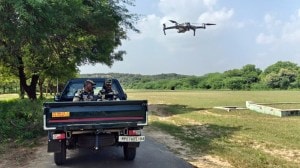BSE eyes greater turnover from North, East
After setting time-bound targets for its derivatives segment to achieve a daily turnover of Rs 250 crore within three months, The Bombay Sto...

After setting time-bound targets for its derivatives segment to achieve a daily turnover of Rs 250 crore within three months, The Bombay Stock Exchange (BSE) has chalked out a plan to widen the cash market.
The exchange is now exploring potential areas from northern and eastern regions of the country from where it can tap maximum turnover for its cash market. BSE is now targeting Delhi and its surrounding areas and the eastern region having close proximity to the Calcutta Stock Exchange which currently account for just 3 per cent of its cash market turnover. BSE’s cash market turnover, which was hovering around Rs 1,000-1,100 crore per day during April 2003, has now risen to Rs 1,500 crore.
S.T. Gerela, director, business development, BSE said, ‘‘Delhi and Kolkata, that is, the northern and the eastern regions account for 30 per cent of the total turnover of the NSE, while the share of these regions in our total turnover is a minuscule 3 per cent only. We intend to raise this to 15-16 per cent over the next six months to one year. NSE gets 60 per cent of its business from centres outside Mumbai, whereas in case of BSE, Mumbai accounts for 80 per cent of the total turnover.’’
NSE has consistently maintained its daily turnover in the range of Rs 2,450-2,750 crore during April-June 2003.
BSE is opening regional hubs in Delhi and Kolkata to create a local network and will also be introducing new members to open offices in these two cities so that they can trade through these hubs.
As of now, a member of a Delhi or Calcutta Stock Exchange needs a leased line from Mumbai to their respective exchange or he has to make use of his own VSAT, which is quite costly. BSE is opening the hubs so as to enable members to take a local line from the regional hub in Delhi/Kolkata region; so the cost of doing business on BSE will come down considerably.Setting up such hubs requires an investment of Rs 30-40 lakh. At least 15 brokers from the northern region have already applied to the Delhi Stock Exchange to trade from the hub and even sub-brokers of broker members can use the facility. While BSE is currently putting up the infrastructure in Delhi, it will be setting up similar facilities in Kolkata by the end of July.
BSE had earlier started setting up trading platforms towards the end of 1999, but following the tech meltdown, there was a collapse in 2001 and a consequential payment crisis faced by CSE. Because of these reasons, 30 per cent of the business generated from Delhi and Calcutta went to NSE.
Photos





- 01
- 02
- 03
- 04
- 05

























